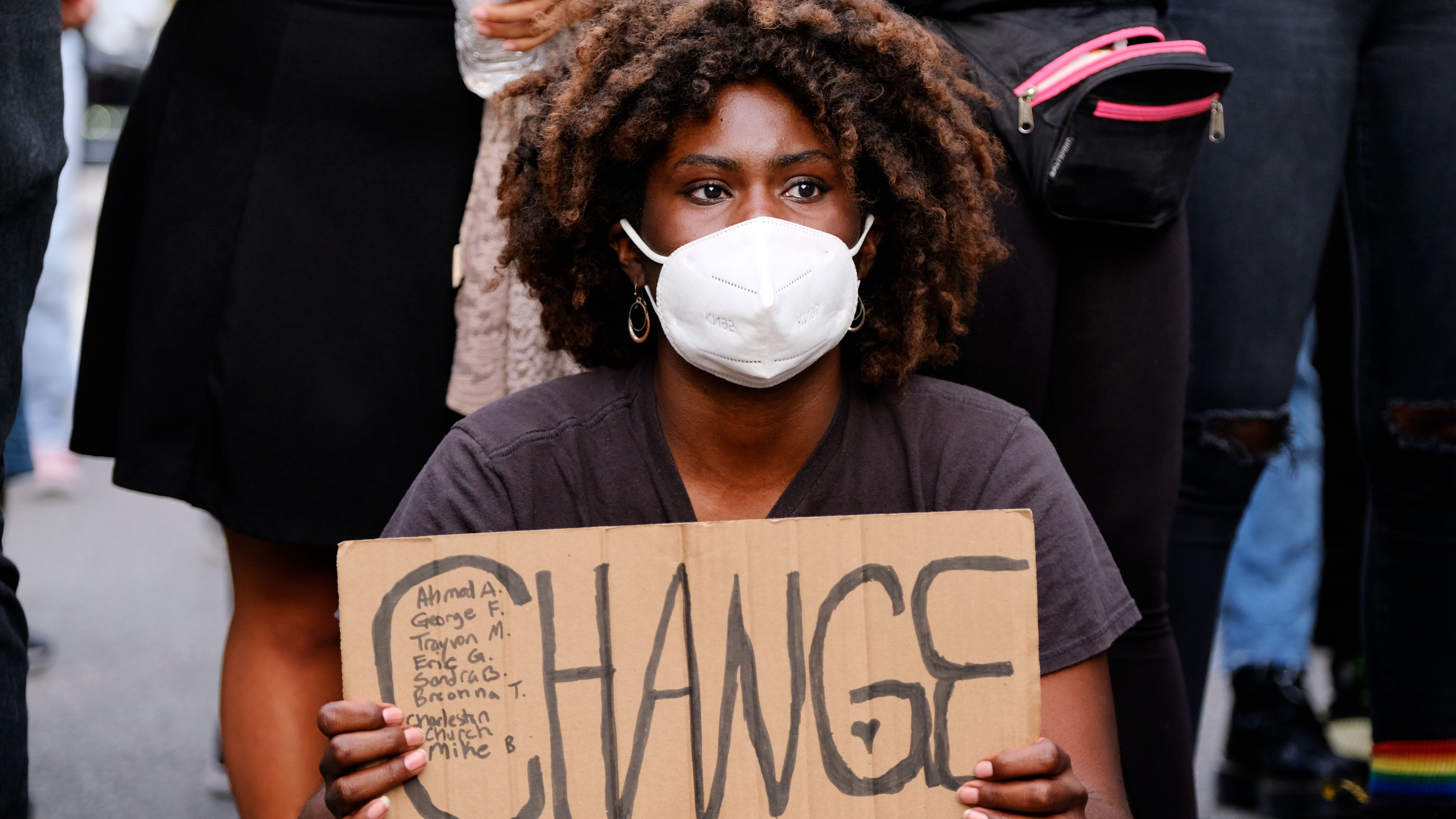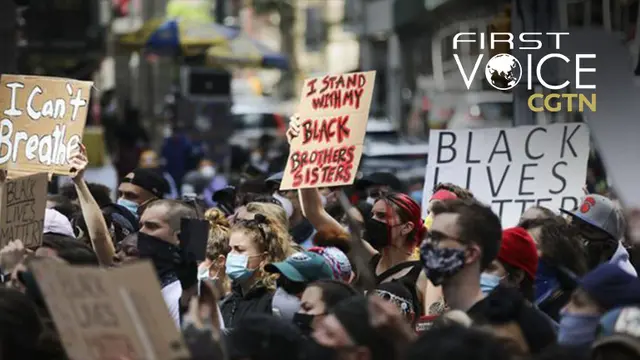Editor's note : CGTN's First Voice provides instant commentary on breaking stories. The daily column clarifies emerging issues and better defines the news agenda, offering a Chinese perspective on the latest global events.
African-Americans are dying at rates that are far more disproportionate to the rest of the population, and that is the clear statement of "Black lives don't matter," said David Harrington, co-director of United for Brownsville.
Brownsville is a residential neighborhood located in eastern Brooklyn in New York City. A 2017 report found that 40 percent of its population lives in poverty. New York's general COVID-19 infection rate is around 20 percent while in Brownsville, the infection rate is a staggering 40 percent.
According to the U.S. Centers for Disease Control and Prevention, blacks make up 33 percent of COVID-19 hospitalizations. Yet, black people are just 18 percent of the state's population in New York.
Here comes the question, why minority people in the U.S. are getting more infected?
Their crowded living condition contributes as they tend to live in densely populated communities where renting expenses are low with decaying facilities worsening sanitary conditions. In Cleveland, for instance, the density in black areas' was 35 to 40 persons per acre, and only half of that when it comes to the city itself.
In terms of working conditions, they work mainly in the service-industry which makes up nearly 30 percent of bus drivers and 20 percent of all service workers, janitors, cashiers where the close contact is vastly needed which greatly increases the chances of infection.
What's more, daily commuting via public transport and the shortage of food storage also adds to their exposure.
Compared to the whites, minorities are almost twice or three times more likely to be uninsured according to statistics. Because of the huge cost, blacks are more likely to report not being able to see a doctor in all age groups. If they live in a crowded house, it's possible they would not be able to do a proper quarantine, in case of infection.
The health disparities with poorer health conditions and barriers to get healthcare, might make many racial and ethnic minority groups especially vulnerable when facing outbreaks of COVID-19.

A Black Lives Matter protester sits and holds a sign for change over the death of George Floyd in Los Angeles, June 2, 2020. /AP
Racial inequality is so deep-seated in the U.S. that the death of George Floyd triggered the outburst of public wrath nationwide which added fuel to the dire COVID-19 pandemic background. People are deeply depressed living in this so called "nation of freedom" where racial inequality and discrimination lurking everywhere since the founding of this nation.
New York Governor Andrew Mark Cuomo echoed that the virus didn't attack equally and hit the low income and minority areas the hardest, and he's vowed to add more COVID-19 testing sites to these neighborhoods.
While officials are promising to boost the education and availability of PPE and hand sanitizer in these communities, however, these are empty talks with people responding with disappointment.
"We are not getting support, nobody is standing up for us. I am black, the Governor is saying all of these great things on TV, but when it gets to pass down or how it gets pass down to the communities, it's slow to come," said Athenia Rodney, Family Advisory Board Fellow of United for Brownsville.
U.S. inability and unwillingness to mobilize and allocate key resources in an efficient and equal way shows the system of this country is designed for the rich, or the white. The unaffordable cost of medical treatment is closely connecting to the climbing rate of COVID-19 infection among low income and minority groups.
Nicolette Louissaint, executive director of Healthcare Ready, complained that the disparity is in the systemic weakness that creates vulnerability in the communities of color for the black and brown people regardless of where they live are going to manifest in a critical and sometimes fatal way during this type of crises.
Indeed, the reality of racial inequality is so cruel that the United States of America should actually be called "Divided States of America" instead. U.S. people literally "can't breathe." And the slogan of the U.S. leaders calling on domestic unity is simply just a slogan.
All in all, this case in Brownsville is just a tip of the iceberg. With the shaky and deep-rooted U.S. system of racial inequality existed, the drama of domestic turmoil would only repeat itself and never fade away.
(CGTN)
 简体中文
简体中文





